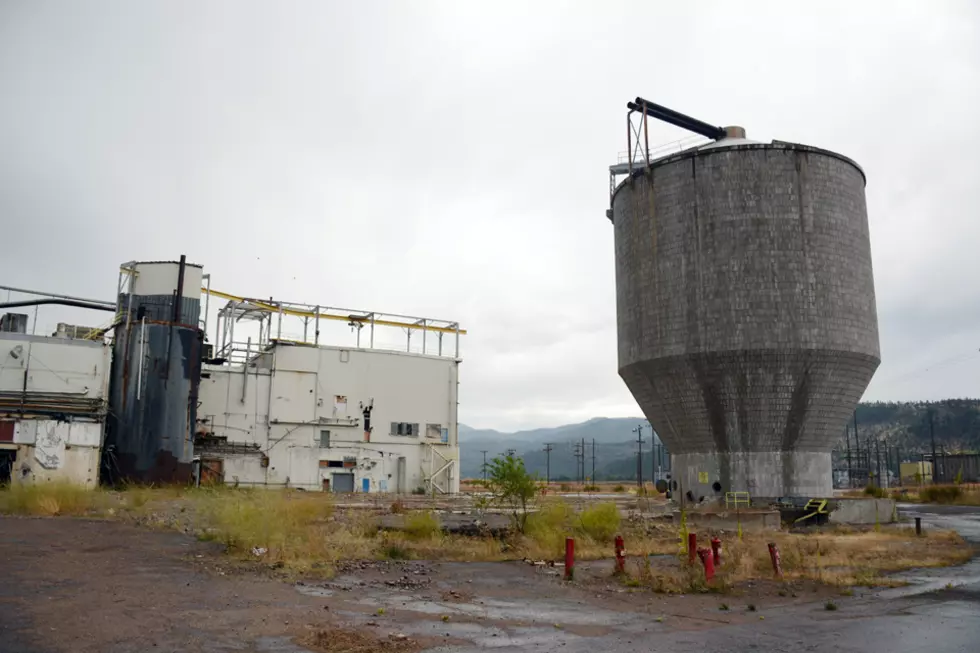
Smurfit advisory group disappointed with EPA’s fall sampling
Laura Lundquist
(Missoula Current) The Environmental Protection Agency has agreed to conduct more sampling at the Smurfit-Stone mill site, but a recent project shows the agency and local organizations still disagree over what information needs to be collected.
EPA project manager Allie Archer last week updated the Frenchtown Smurfit Stone Community Advisory Group on the additional groundwater, soil and sludge sampling being conducted on the Smurfit-Stone site, most of which won’t begin until spring. However, technicians did do limited well water sampling across the site from Sept. 18 through Oct. 3 and have sent the samples to the EPA laboratory for analysis.
When advisory group member Jen Harrington saw a map of the locations that were sampled, she was disappointed to see some wells where the EPA hadn’t sampled for the toxins - dioxins, furans and coplanar PCB’s - produced by the pulp mill.
“If you were really trying to identify some of the gaps, that was a huge gap that again isn’t being addressed that could be more decisive in identifying a source area,” Harrington said.
Those information gaps had been identified through the course of two multi-hour meetings this past spring between the EPA and local representatives of Missoula County, the water quality district, the advisory group and other trustees. The results of the meetings were compiled into the Data Quality Objectives - the document outlining what would be sampled and why. The meetings came about after EPA regional administrator KC Becker agreed in February to have the agency conduct additional sampling after Missoula County sent a formal request for more sampling in October.
In May, Archer told the Missoula County Board of Commissioners that the additional sampling would be completed, regardless of whether the current owners of the site - the potentially responsible parties - agreed or not. The potentially responsible parties can hold things up because they have to pay for the work.
But on Thursday, it appeared that some sampling that the county wanted might not occur.
Archer explained the normal process for the work plans that outline the various sampling projects. The potentially responsible parties write the plans, the EPA reviews them and returns them with comments, and the potentially responsible parties write the final plan. The EPA reviews again and sends them out to the Smurfit technical working group for input.
However, the plan for the recent well sampling wasn’t sent to the Smurfit group due to the tight timeline, Archer said. That’s why the advisory group was surprised Thursday to see what was and wasn’t sampled.
Archer said the EPA decided not to sample some wells, because previous sampling hadn’t shown the presence of aeroclor PCB’s and the wells weren’t positioned between sources of contamination and the Clark Fork River.
“There wasn’t a reason in our work plan to justify bringing those back on board,” Archer said. “The initial (Data Quality Objectives) suggested that we include all wells everywhere. EPA used data we collected, our historical knowledge, to pick wells that met a justifiable reason for sampling.”
Members of the advisory group protested, saying that groundwater likely used to flow in different directions when the mill site was using a lot of groundwater. So contaminants could be in different locations than what is indicated by the flow today.
Archer said four more sampling events, including more groundwater and sludge characterization, will occur next year, so there’s still time to address the advisory group’s concerns. And the Smurfit technical group should be allowed to see the work plans before the sampling begins. Once the data from the fall sampling is back from the lab, which should be within eight to twelve weeks, it may provide more insight on where sampling needs to occur, Archer said.
Harrington also asked why the EPA wasn’t sampling the wells on a quarterly basis like the locals had asked for. Like streamflow, groundwater flow can change throughout the year so sampling only once in a year could miss a lot of information.
“That’s something that we’re specifically going to talk about in its own meeting coming up,” Archer said. “We didn’t necessarily see eye-to-eye on the need for that, but we want to hear the reasoning. We know that’s something that is wanted for 2024 and we’re going to meet in the next couple months to talk about the frequency of groundwater sampling.”
Based on the disappointed response of the advisory group, those meetings will be lively. Elena Evans, Missoula City-County Environmental Health manager, said the previous sampling was insufficient, but the EPA is still refusing to address the gaps highlighted in the spring meetings.
“This is a cart and the horse issue. The contention of the community is that not all of (the mill site) has been characterized,” Evans said.
Contact reporter Laura Lundquist at lundquist@missoulacurrent.com.
